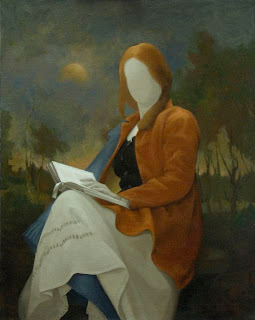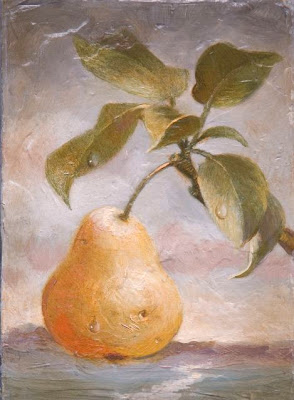There are a LOT of ways to paint a portrait.
I use several different methods (and sometimes combine them) depending on what I think is best at the time.
Sometimes I even remember to take pictures of the process.

This portrait of Gwyneth (20"x24", oil on linen) won the Certificate of Excellence at the Portrait Society of America's International Portrait Competition in Philadelphia this year (2008).
Here's how I did it:

This a drawing on Acetate. I use prepared acetate instead of tracing paper because I can see through it. Believe me, it comes in handy later in the painting if my lines begin to "wander" and I need to correct.
I use a "Sharpie" Permanent Marker as it makes a clean line and doesn't smear.
I use a sheet of graphite paper and a ballpoint pen to transfer the drawing to the canvas. Acrylic paint will cover graphite (pencil). Oil paint will not cover graphite so if I were painting in oil, I'd need to erase my original lines and replace them with a Sharpie line.

I used acrylic paint for my first layer. In order to do this, I needed to use an acrylic primed linen - acrylic paint will not stick to oil primed linen and will not be archival.
I use Golden Matte colors. I try to stick to the dull halftone, neutral earth colors.
For the color "white" I choose a dull warmish neutral - about the value of a brown paper bag. Nothing will be lighter in value than this.
If my subject has light skin, I use the same paint and color for the skintones as my "white." If my subject has darker skin, I deepen the value accordingly.

I may need to put on more than one layer of paint in order to cover the canvas and make it flat - like a poster. It is a good way to lay down my basic composition and make a definite statement of shape.
Two thin layers are much better than one thick layer. And I try not to leave ridges.
Posterizing is a good way to see if a composition works. This layer could be in oil but acrylics are a faster way to saturate the canvas.
I chose a medium value paint for all the objects and was thinking "halftone" (the space between light and shadow). Once the white of the canvas is covered up - it doesn't look so dark.
I always establish black and white immediately in an underpainting. It will help all the other mid-range values fall into place.
















































